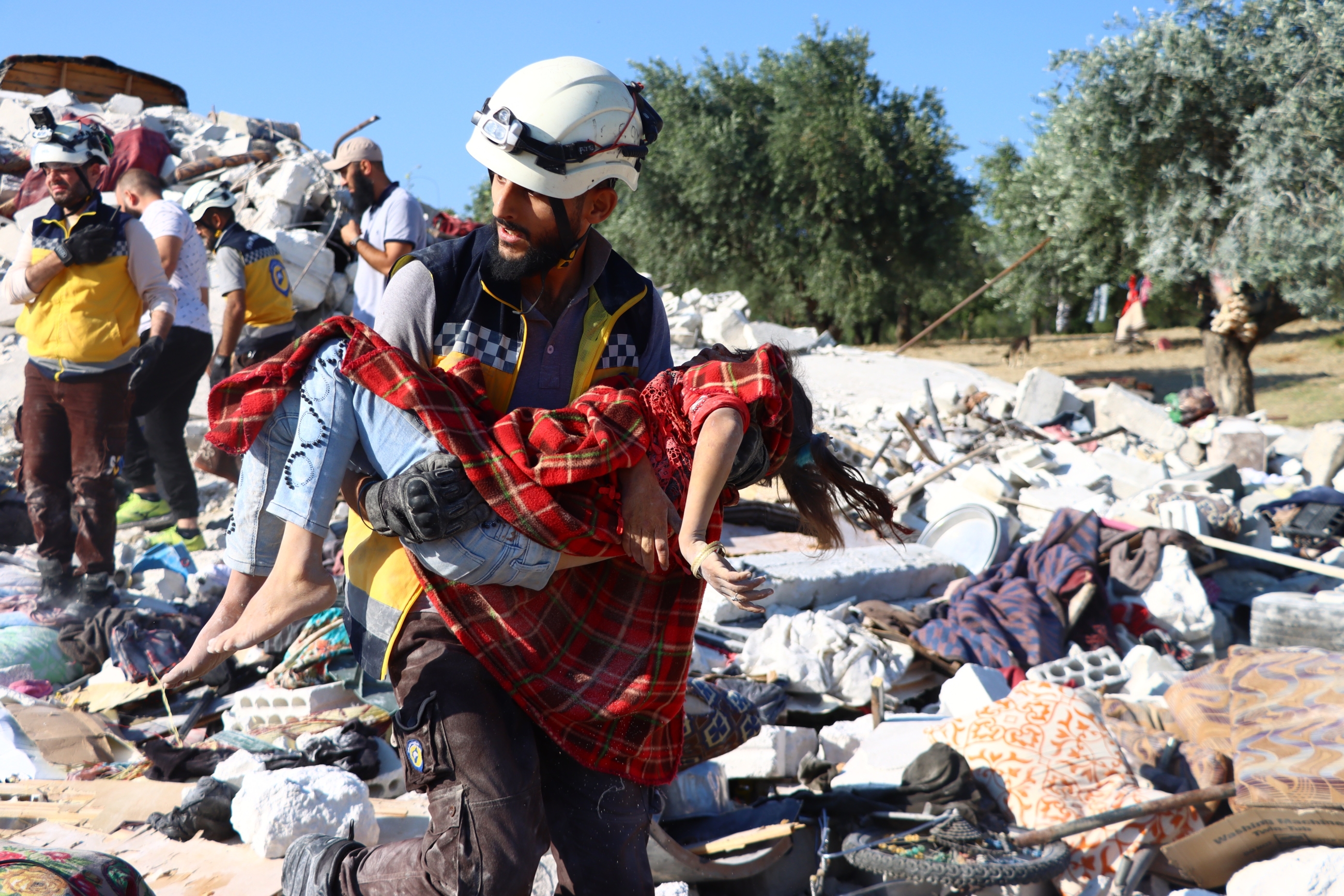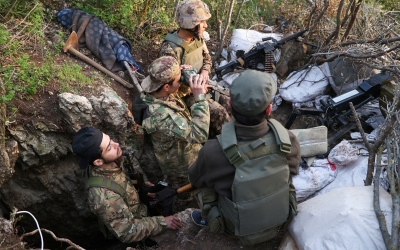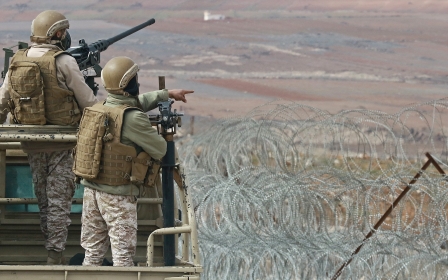Syria: Four children among seven civilians killed in Russian air strikes on farm

Russian air strikes killed seven civilians, including four children, on Friday morning in an attack that targeted residential homes and a poultry farm inhabited by displaced people in rural Idlib in northwestern Syria.
According to the Paris-based Syrian Network for Human Rights (SNHR), the warplanes are believed to be Russian Su-34 fixed-wing warplanes.
The group said at least two missiles hit a poultry barn in the northern outskirts of al Jadida village near Jisr al Shoghour city in Idlib province and the surrounding area, where a displaced family had been sheltering.
The strike killed four children, all siblings under the age of 10, as well as one adult, and also wounded five others. Another missile hit a house near the poultry barn, killing another civilian, SNHR added.
There was also a second air strike by the same warplanes on the western outskirts of the nearby village of al Jadida that killed one more civilian.
New MEE newsletter: Jerusalem Dispatch
Sign up to get the latest insights and analysis on Israel-Palestine, alongside Turkey Unpacked and other MEE newsletters
“This attack by the Russian forces is a clear violation of the ceasefire agreement reached after discussions between the Turkish and Russian presidents, which went into effect on 6 March 2020,” the SNHR said in a statement.
“The Russian forces have clearly violated the Security Council resolutions 2139 and 2254 which prohibit any further indiscriminate attacks, as well as violating the rules of international humanitarian law which stress the distinction between civilians and combatants.”
According to a military monitor based in Idlib, two Russian warplanes took off at 5:00 a.m. (03:00 GMT) on Friday from Russia's Mediterranean base of Hmeimim and circled Idlib province before carrying out the attacks.
The monitor, known as Observatory 80, told Middle East Eye that the first plane targeted a house in the Al-Jadida area that was inhabited by displaced civilians from the Jungle Plain, and then the second plane launched two missiles targeting a civilian area inhabited by displaced people in the Al-Janudiyah area.
However, two activists who visited the site told MEE that other attacks targeted a military headquarters, believed to belong to the armed group Hay'at Tahrir al-Sham (HTS), a former arm of al-Qaeda that currently controls most of Idlib.
"I can confirm that one of the attacks directly targeted the headquarters, but I can't tell how many casualties there were. The security forces prevented us from entering the place," one activist told MEE.
Idlib is home to about three million people, more than two-thirds of whom were displaced by Syrian President Bashar al-Assad's violent crackdown on peaceful protests in 2011 and the conflict that followed.
Turkish military bases are located in Idlib as part of deals between Russia and Iran, who are allies of the Syrian government.
Idlib is one of the last areas in Syria to remain outside of Assad's control, alongside northeast Syria, which is controlled by US-backed Kurdish forces.

Friday's attacks also wounded 12 other people, including eight children, according to the Syrian Civil Defence group, commonly known as the White Helmets.
On Friday the group published photos of children being pulled out of the rubble, and other photos of people trapped underneath. The volunteer group does not normally respond to attacks targeting fighters.
“The work took about an hour and a half until all the victims were evacuated,” Bena Bahri, the head of the civil defence group that responded to the attack, told MEE.
“The destruction was huge, and the work was very difficult and exhausting, especially with the fears of facing new air attacks. We lost many team members in similar incidents,” Bahri added.
A mixture of moderate rebels, leaders of Islamic groups, and foreign militants are based in al-Janudiyah, a predominantly Christian town.
Earlier this week, the leader of the HTS, Abu Mohammad al-Jolani, held meetings with notable Christians in Idlib in what observers see as an attempt to improve the group's image on the international stage.
Since Moscow intervened in the Syrian war in 2015 in support of Assad, war monitors estimate that Russian or Russian-backed strikes have killed at least 24,000 non-combatants.
The UN estimates that at least 306,887 civilians have been killed in the Syrian conflict between March 2011 and March 2021. The war has also led to the internal displacement of approximately 6.5 million Syrians.
Russia and Iran have been the main international backers of Assad since the 2011 revolution that erupted against his government, which later turned into a protracted proxy war.
Israeli air strikes in Damascus
Also on Friday, suspected Israeli air strikes hit military positions in the area surrounding the capital Damascus, leaving at least three people dead.
Official Syrian news agency Sana said the three were all soldiers and that seven more people were wounded in the attack which took place just after midnight, local time.
SOHR said eight people were killed in the shelling, including three non-Syrians and two “collaborators” with the Lebanese Hezbollah group who "were killed in a position hosting a workshop for manufacturing Iranian drones nearby Sayeda Zeinab area".
Neither Hezbollah nor the Iranian authorities commented on the reports.
The three Syrian soldiers were killed while stationed at military positions hosting air defence batteries in the perimeter of Al-Mazzah airbase, SOHR added.
Since the war broke out in Syria in 2011, Israel has carried out hundreds of air strikes on Syrian territory, targeting government positions as well as Iranian-backed forces and Hezbollah fighters.
Israel rarely comments on its air strikes in Syria but has said repeatedly it will not allow its regional rival Iran to extend its footprint in Syria.
Middle East Eye delivers independent and unrivalled coverage and analysis of the Middle East, North Africa and beyond. To learn more about republishing this content and the associated fees, please fill out this form. More about MEE can be found here.




